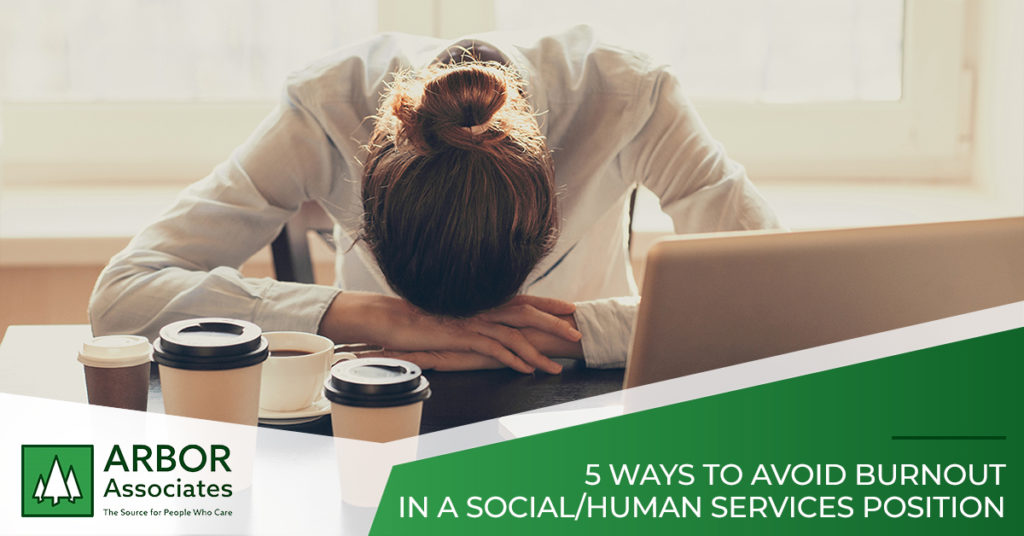It’s easy for workers in social and human services positions to experience compassion fatigue. After all, your role is a one-way relationship helping clients explore their issues while receiving no care back from the client. It’s crucial that you keep an emotional distance from the client. However, it’s all too easy to become frustrated, sad, or anxious about clients sometimes. When it gets to be too much, you might experience the symptoms of work burnout. Some of these symptoms include:
- Exhaustion
- Lack of focus
- Physical health changes
- Mental health changes
Take heart – work burnout can be minimized and even avoided. Here are five ways you, a social/human services professional, can prevent burnout while still providing exceptional care for your clients.
Care for Your Body and Your Brain
After a long stressful day, the temptation may exist for you to go home and lounge in front of the television to blow off steam. In extremes, you might choose drugs or alcohol to ease your feelings. These are habits that you should avoid. Try to make taking care of yourself as important as taking care of your clients, and make healthy lifestyle choices when possible. Consider adding nonprofessional activities to your schedule and take breaks when you need them. Remember that you can’t do your best for your clients if you’re stressed out, tired, or angry.
Talk to Your Supervisor
A good relationship with your supervisor is an essential tool in preventing work burnout. They may be able to offer advice or simply lend an ear for a few minutes. However, if your relationship with your supervisor doesn’t lend itself to that, try seeking the counsel of a trusted colleague. Are you the boss? Find a community group. A great place to start is the National Association of Social Workers (NASW), where you can partner with other social workers for mutual support.
Connect
Attend conferences, participate in local, state, and national social/human service organizations. Consider joining online social media groups with other professionals in your practice area. Talking through your emotions with those who can empathize can make a big difference. A conference might be the ideal place to learn new techniques to start a new approach at work.
Educate Colleagues About Secondary Trauma Stress
Secondary trauma stress is a new concept, and unfortunately, it can go unrecognized, particularly in organizations where workers are over-extended or understaffed. These types of toxic work environments are where secondary stress is most likely to take hold. Spread the word and make your team aware of the dangers of secondary trauma stress.
Make Changes
If nothing else is working, it might be time to find a new position. The stress can be a product of the type of client you treat or the setting in which the treatment is taking place. To alleviate burnout, consider changing to a population of clients with less severe illnesses. Working in private practice may be less stressful for you than in a public setting. Consult with a mental health professional if your symptoms persist.
Let the team at Arbor Associates help you make the most of your skills and reach your career goals. With Arbor, you’re in control of what shifts you choose to pick up and when!

